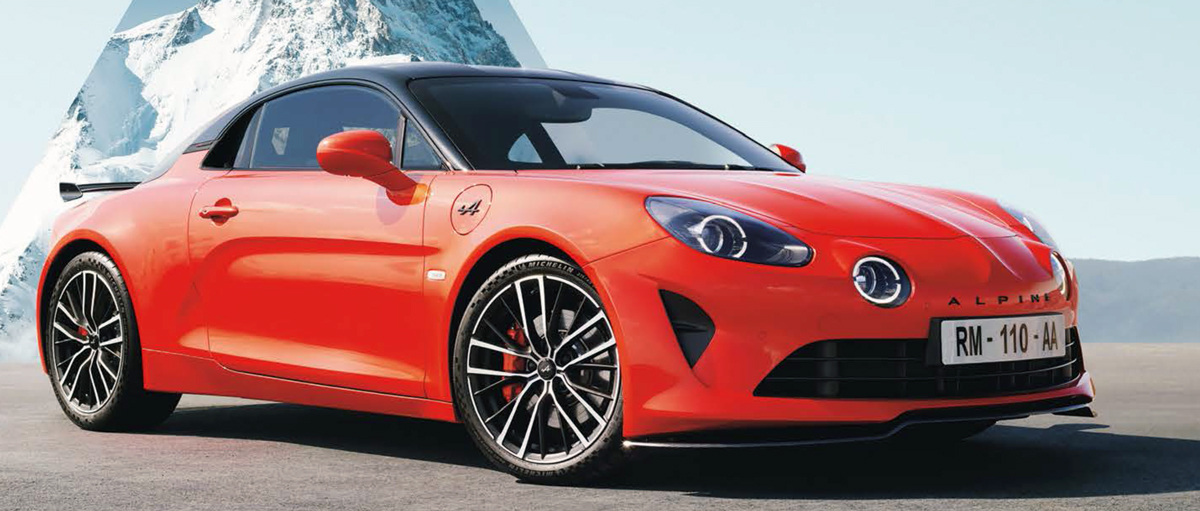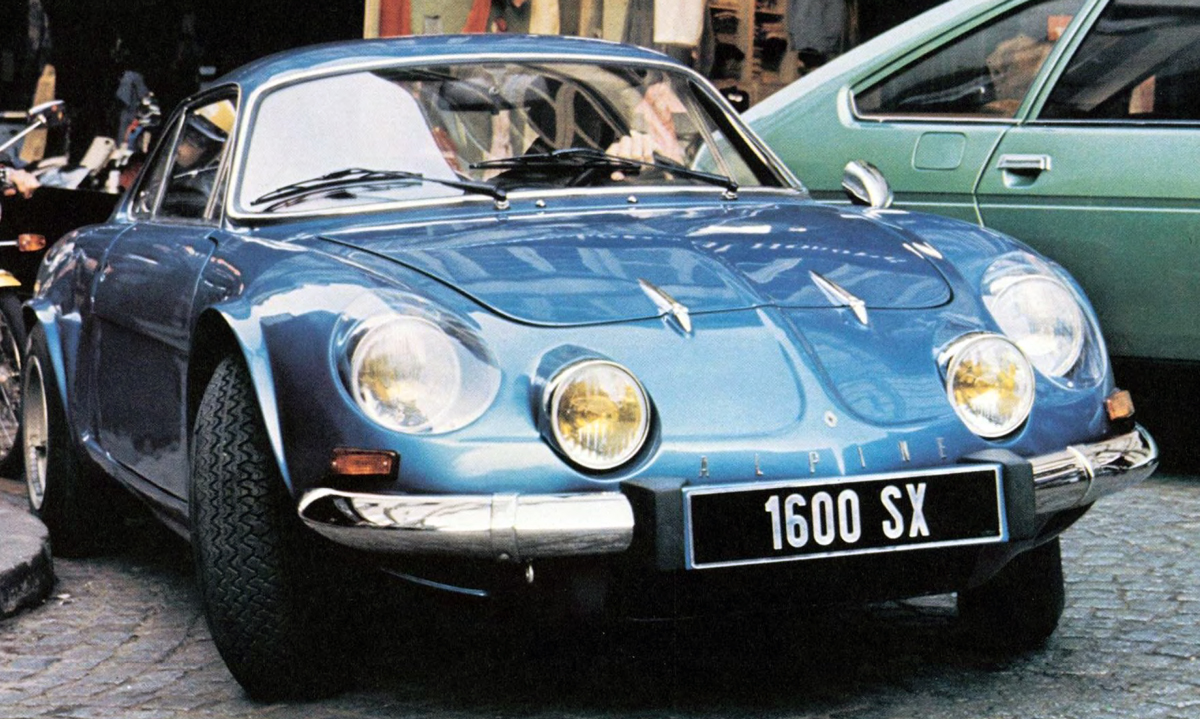Acura Alfa Romeo Alpine AMC Aston Martin Audi Austin Austin-Healey Bentley BMW Bugatti Buick Cadillac Citroën Chevrolet Chrysler Datsun DeLorean Dodge Ferrari Fiat Fisker Ford Genesis GMC Gumpert Honda Hummer Hyundai Infiniti International Isuzu Jaguar Jensen Jeep Kia Koenigsegg Lamborghini Land Rover/Range Rover Lexus Lincoln Lotus Maserati Maybach Mazda McLaren Mercedes-Benz Mercury MG Mini Mitsubishi Morgan Nissan Oldsmobile Opel Pagani Peugeot Plymouth Pontiac Porsche Ram Rolls-Royce Saab Saturn Scion Smart Spyker SRT SSC Studebaker Subaru Suzuki Tesla Toyota Vencer Volkswagen Volvo

Alpine PDF Brochures
A110
Alpine A110 (new)
2023 Alpine A110 v2 PDF Brochure (6.7 MB)2022 Alpine A110 v2 PDF Brochure (14.7 MB)
2022 Alpine A110 v1 PDF Brochure (6.8 MB)
2021 Alpine A110 v2 PDF Brochure (20.9 MB)
2021 Alpine A110 v1 PDF Brochure (7.6 MB)
2021 Alpine A110 Légende GT PDF Brochure (1.0 MB)
2020 Alpine A110 Color Edition PDF Brochure (2.9 MB)
2020 Alpine A110 Légende GT PDF Brochure (1.1 MB)
2020 Alpine A110 v3 PDF Brochure (2.3 MB)
2020 Alpine A110 v2 PDF Brochure (2.3 MB)
2020 Alpine A110 v1 PDF Brochure (4.1 MB)
2018 Alpine A110 v5 PDF Brochure (4.4 MB)
2018 Alpine A110 v4 PDF Brochure (6.1 MB)
2018 Alpine A110 v3 PDF Brochure (11.6 MB)
2018 Alpine A110 v2 PDF Brochure (4.1 MB)
2018 Alpine A110 v1 PDF Brochure (5.5 MB)
2018 Alpine A110 GT4 PDF Brochure (2.6 MB)

page 11 - 2022 Alpine A110 S catalogue
Alpine History
Société des Automobiles Alpine (Alpine), a French automaker was established in 1955 by Jean Rédélé, a Renault car dealer and successful automobile racer. Among Rédélé's many victories were class wins in the 1952 Mille Miglia (roughly 1,000 miles) and the 1954 Liège-Rome-Liège (roughly 2,000 miles) in modified Renault 4CVs. The first Alpine model, the A106, was built as a small two-door sports car fitted with a fiberglass body designed by Giovanni Michelotti on the chassis and drivetrain from the lightweight, rear engine Renault 4CV and was introduced in 1955. Alpine/Rédélé had gained the support of Renault due to the many racing victories in the Renault 4CV's.
The A108 model was introduced in 1957 and was designed with a backbone chassis; i.e. a singular central steel tube between front and rear sub-frames, a larger rear-hung engine from the Renault Dauphine and an updated fiberglass body also designed by Giovanni Michelotti, bonded to the frames to create a lightweight and rigid unit.
The A110, unveiled in 1961 was an evolution of the A108, used the 4-cylinder 5 bearing engine, 4-wheel disc brakes and other mechanical parts from the newer Renault 8. The A110 had during the production three different body styles; 2 seater coupe, 2 seater convertible and 2+2 coupe, many different Renault engines ranging from 44 HP to 200 HP in turbo charged racing form and updated mechanics from Renault. The signature 2 extra headlight option came in 1967. Renault acquired 70% of Alpine in 1973 and the A110 was in production until 1977.
The street model successors, the A310 was for sale between 1971-1985 and the GTA/A610 from 1984-1991 before the A110 was reintroduced in 2017 as a 2018 Model Year (MY), based on the original formula of being lightweight (1,103 kg Première Édition - 1,080 kg Pure/Légende Editions) and agile. The current A110, a two-seat coupe, has a mid-rear mounted 4-cylinder 1.8 L turbo charged Nissan/Renault engine, a 7-speed dual-clutch automatic transmission, forged aluminum double-wishbone suspension front and rear, a very flat underside and a bonded and riveted aluminum body.
Alpine has been designing and building racing cars since its inception with rally cars based on the A106, A108 and the higly successful A110 with it's many Group 4 rallye victories. Spaceframe (tubular) chassis cars for lighter weight and higher rigidity, were used in 24 Hours of Le Mans, among them the M63 models in 1964, the A210's in 1966 and A220's in 1968. Alpine achieved several class wins and an overall win in 24 Hours of Le Mans in 1978 with the A442. Alpine has also designed/built vehicles from hot-hatches like the Renault 5 GT Turbo, Clio Williams and Mégane Renaultsport 265 Trophy to open-wheel racers and current LMP2's and it's variants.

